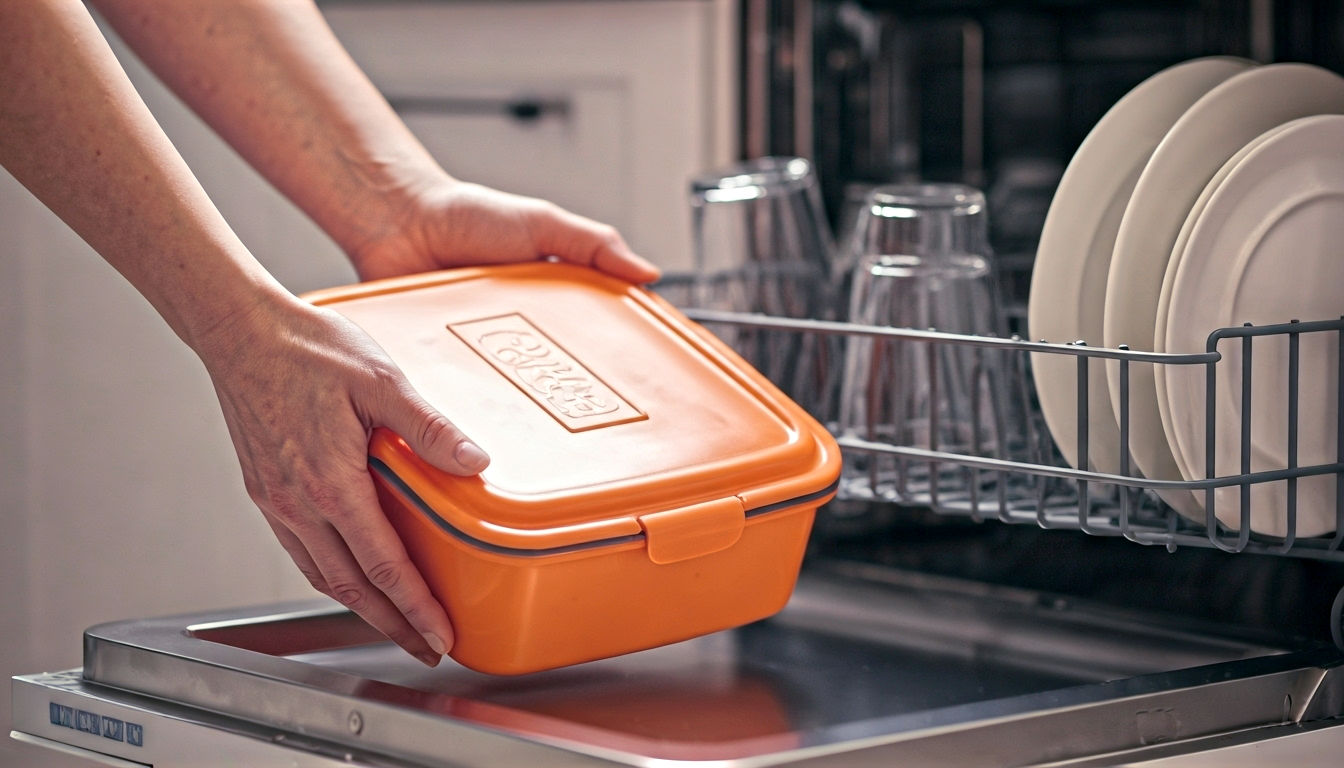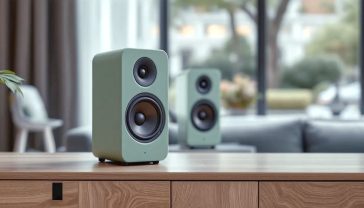The Definitive Guide to Dishwasher Safe Symbols: From Kitchen Confusion to Crystal Clear Confidence
Stop guessing! This definitive guide decodes every dishwasher safe symbol found in the UK, explains what ‘dishwasher safe’ truly means, and tells you exactly what you can and can’t put in your machine.

This post may contain affiliate links. If you make a purchase through these links, we may earn a commission at no additional cost to you.
We’ve all been there. You’re clearing up after dinner, ready for the satisfying click-clack of loading the dishwasher. You pick up that lovely new water bottle, a souvenir mug from a seaside holiday, or the plastic container from last night’s takeaway curry. You turn it over in your hands, and a moment of genuine anxiety hits.
Can this go in the dishwasher?
You squint at the bottom, searching for a sign. What you find is a confusing little doodle that looks suspiciously like a toddler’s drawing. Is that a plate? A snowflake? A wine glass? It’s a moment of domestic Russian roulette. You can either risk it and potentially melt your favourite lunchbox into a modern art sculpture, or give in and head to the sink for a soapy session with the Marigolds.
It’s a tiny, everyday problem, but a deeply annoying one. This confusion stems from a simple fact: there isn’t one single, universally agreed-upon symbol for “dishwasher safe.” Instead, we’re left to decipher a jumble of hieroglyphics that vary from brand to brand and country to country.
But don’t worry. This guide is here to be your definitive translator. We’re going to decode every symbol, explain the science behind what makes something truly dishwasher-proof, and give you the confidence to load up your machine without a flicker of doubt. By the time you’ve finished reading, you’ll be the undisputed master of your dishwasher, ready to face any cryptic symbol the kitchen throws at you.
What Does “Dishwasher Safe” Actually Mean? It’s More Than Just Survival
First things first, let’s get our terms straight. When a manufacturer labels an item as “dishwasher safe,” they aren’t just saying it will come out in one piece. A truly dishwasher-safe item should withstand the machine’s harsh environment over many cycles without being damaged or becoming unsafe to use.
Think of your dishwasher as a miniature industrial cleaning chamber. Every cycle unleashes a three-pronged attack on its contents:
- Intense Heat: To properly clean and sanitise, dishwasher cycles can reach blistering temperatures, often between 55°C and 75°C (130°F to 170°F). This heat is fantastic for killing germs but can be a death sentence for certain materials, causing them to warp, melt, or crack.
- Powerful Water Jets: The spray arms in your machine fire off high-pressure jets of water to blast away food grime. While great for cleaning that stubborn lasagne dish, this force can be surprisingly abrasive, potentially chipping delicate glassware or stripping the pattern from your favourite mug.
- Corrosive Detergents: Dishwasher detergents are potent chemical cocktails. They contain enzymes to break down starches and proteins, and bleach to tackle stains like tea and coffee. These powerful agents are far harsher than your average washing-up liquid and can cause materials to discolour, tarnish, or degrade over time.
So, a “dishwasher safe” label is a promise. It’s the manufacturer’s guarantee that their product has been designed and tested to endure this punishing combination of heat, water, and chemicals, again and again, without losing its shape, colour, or, most importantly, its safety.
The Mystery of the Many Symbols: Why Isn’t There Just One?
“But why can’t they all just use the same symbol?” It’s a fair question, and the answer is a simple quirk of history. When automatic dishwashers first started appearing in British homes in the 1950s and 60s, they were a luxury item. Each manufacturer of kitchenware—from Tupperware to Pyrex—developed its own products and, consequently, its own way of telling customers how to care for them.
There was no global regulatory body to step in and say, “Right, everyone, this is the symbol we’re using.” As a result, a whole ecosystem of different symbols evolved independently. Some are simply a manufacturer’s best guess, while others are based on rigorous, standardised testing. This is why we have the messy, confusing landscape we see today.
Think of it like plug sockets. We have our sensible three-pin plugs in the UK, while Europe uses two pins and America has its own design. They all do the same job, but they aren’t interchangeable. Dishwasher symbols are the same—different designs, all trying to convey the same basic message.
Decoding the Doodles: The Most Common Dishwasher Symbols Explained
Right, let’s get to the good stuff. While there are dozens of variations out there, most symbols fall into a few key categories. If you can learn to spot these, you’ll be able to interpret almost anything you find.
The Classic: Plates in Water
This is the most common and recognisable type of dishwasher safe symbol. It almost always features a stylised image of dishes inside a square box, which represents the dishwasher rack.
- What it looks like: A square containing plates, glasses, or both. It will also have diagonal lines or droplets falling from above to represent water spray.
- What it means: This is a general-purpose “dishwasher safe” mark. It indicates the item can handle a standard, normal cycle in your machine without any special precautions. It’s the green light you’re looking for on everyday crockery and glassware.
- Variations: You’ll see many different artistic takes on this. Some might only show glasses, some only plates. Some have neat lines for water; others have scattered drops. Don’t get bogged down in the details—if it looks like dishes being sprayed with water in a box, you’re good to go.
The Warning: “Top Rack Only”
This is arguably the most important symbol to understand, especially when it comes to plastics. Getting this one wrong is the number one cause of melted Tupperware lids.
- What it looks like: It often builds on the “Classic” symbol. You might see the same box of plates, but with the words “TOP RACK ONLY” written nearby. Some designs cleverly show the water jets only hitting the top of the dishes.
- What it means: The item is safe in the dishwasher, but only if placed on the top rack.
- Why it’s so important: In most dishwashers, the main heating element is located at the bottom of the machine. This makes the bottom rack significantly hotter than the top rack. Delicate plastics or items with printed designs can’t handle this intense, direct heat. Placing them on the top rack keeps them a safe distance from the element, allowing them to get clean without warping or melting.
The Gold Standard: The BS EN 12875 Mark
Now we’re moving from helpful doodles to a mark of professional assurance. If you see this symbol, you can be absolutely confident in the product’s durability.
- What it looks like: This symbol is less pictorial. It usually features the “Plates in Water” icon, but it will be accompanied by a number. For example, you might see “BS EN 12875-1” and a number like “x125” or “x500”.
- What it means: This isn’t just a claim; it’s a certification. It shows the item has been independently tested according to the official British and European standard for “Mechanical dishwashing resistance of utensils.”
- Breaking it down: The number (e.g., 125) tells you exactly how many dishwasher cycles the item has survived under controlled test conditions without showing any visible damage or degradation. This is the gold standard of dishwasher safety—a guarantee backed by science, not just a marketing claim. It’s most often found on higher-quality glassware and ceramics intended for professional or heavy domestic use.
The Great Impostor: Don’t Confuse “Dishwasher Safe” with “Food Safe”
This is a critical point of confusion, and it’s vital to know the difference. There is one very common symbol found on kitchenware that has absolutely nothing to do with dishwashers.
The Glass and Fork Symbol: Your Guarantee of Food Safety
You will have seen this symbol a thousand times on everything from plastic containers and water bottles to cling film and cooking utensils.
- What it looks like: A stylised wine glass icon next to a fork icon.
- What it means: This symbol means the item is “food safe” or “food grade.”
- The Law: In the UK and the European Union, this symbol is a legal requirement for any material that is intended to come into contact with food. It is a declaration that the material will not transfer any harmful substances into your food in significant amounts.
- The Crucial Difference: The food safe symbol tells you that the material is safe to eat from, but it tells you nothing about how it will react to the intense heat and harsh detergents of a dishwasher. A thin plastic container might be perfectly food safe but will melt into a useless puddle on your dishwasher’s bottom rack.
Remember: All dishwasher-safe items must also be food safe, but not all food-safe items are dishwasher safe. Look for both symbols if you want to be sure.
A Material-by-Material Guide: What You Can (and Definitely Can’t) Put in Your Dishwasher
Understanding the symbols is half the battle. The other half is knowing a little bit about how different materials react to the dishwasher’s harsh environment.
Glassware & Ceramics: From Sturdy Mugs to Delicate China
- Generally Safe: Most everyday items are fine. This includes standard drinking glasses, toughened glass like Pyrex, and the vast majority of modern plates, bowls, and mugs.
- Approach with Caution:
- Thin-walled glass: Delicate wine glasses can be shattered by the powerful water jets or by clinking against other items. If you do put them in, make sure they are securely placed with plenty of space around them.
- Anything with metallic trim: Gold or platinum rims on glasses or plates will be worn away by the abrasive detergents over time.
- Keep Out at All Costs:
- Leaded crystal: The heat and chemicals can cause microscopic etching on the surface, leaving your beautiful crystal permanently cloudy.
- Hand-painted pottery: The vibrant colours on that souvenir plate from Spain will likely be washed away, leaving you with a plain, sad-looking dish.
- Antique china: Delicate, older ceramics can suffer from “thermal shock”—the rapid change in temperature can cause fine cracks to appear in the glaze. Don’t risk your nan’s prized Wedgwood.
Plastics: The Most Confusing Culprit
Plastic is where most dishwasher disasters happen. The golden rule is simple: if there is no dishwasher safe symbol, do not put it in.
- Recycling Codes Are Not Dishwasher Symbols: This is a common and costly mistake. Many people see the triangular recycling symbol with a number inside (e.g., a ♷ for Polypropylene) and assume it relates to safety or durability. It doesn’t. This code only tells your local council what type of plastic it is for recycling purposes. It has no bearing on whether it can withstand your dishwasher.
- Safe Bets: Plastics labelled with PP (Polypropylene, #5) are generally heat-resistant and a good candidate for being dishwasher safe (top rack, of course). Most modern food containers, like those from Sistema or Joseph Joseph, are made from this. Also, look for items marked BPA-Free, as this indicates a more modern, stable type of plastic.
- The Risks: Unmarked or unsuitable plastics can warp, melt, or, worse, leach harmful chemicals when exposed to high heat. It’s simply not worth the risk.
Metals: From Gleaming Steel to Ruined Pans
- A-OK: High-quality stainless steel is the king of the dishwasher. Your cutlery, steel mixing bowls, and most steel pots will come out looking great.
- The No-Go List: This is a list of kitchen sins. Never put these in your dishwasher:
- Cast Iron: The machine will strip away the “seasoning”—the black, non-stick layer of polymerised oil that you’ve lovingly built up over years. It will also cause the pan to rust instantly.
- Non-Stick Pans: The harsh detergents will rapidly degrade the non-stick coating, rendering your expensive frying pan useless.
- Aluminium: Disposable takeaway containers or cheap baking trays will discolour, turning a dull, dark grey. The oxidised surface can also leave marks on other dishes.
- Copper and Brass: Prized for their warm shine, these metals will become dull and tarnished after just one wash.
Wood, Bamboo, and Other Natural Materials
This one is easy. The rule is simple: just don’t.
- Why?: Wood and bamboo are porous materials. They soak up the hot water, causing them to swell, crack, warp, and split as they dry. Any glue used in wooden chopping boards or utensils will dissolve, causing them to fall apart. It’s a one-way ticket to the bin for your favourite wooden spoon or that lovely olive wood salad bowl.
Top Tips from the Pros: Using Your Dishwasher Without Destroying Your Dishes
Now that you’re an expert on symbols and materials, here are a few pro tips to ensure a long and happy life for your kitchenware.
- Embrace the Mantra: “When in doubt, wash it out.” If you have to spend more than five seconds wondering if an item is safe, it’s quicker and safer to just wash it by hand.
- Load Like a Genius: Don’t just chuck things in. Place plastics and delicate items on the top rack. Ensure glasses aren’t touching each other. Face heavily soiled items towards the spray arms. A well-loaded dishwasher cleans better and protects its contents.
- Choose the Right Setting: You don’t always need the intensive “pots and pans” cycle. For most loads, the ‘Eco’ mode is perfectly sufficient. It uses lower temperatures and less water, which is not only better for the planet and your wallet but also gentler on your dishes.
The Future of Dishwasher Safety: Smarter Kitchens on the Horizon
The world of kitchenware labelling is, slowly but surely, getting better. There is a growing push from consumer groups and manufacturers for a single, universal dishwasher safe symbol that everyone can understand.
We are also seeing the rise of QR codes on product packaging. In the future, you might simply scan a code with your phone to get detailed care instructions, including ideal dishwasher cycles and detergent recommendations. Innovations in material science are also leading to more durable, eco-friendly plastics and ceramics that can withstand hundreds of washes with ease.
Conclusion: Cracking the Code to a Simpler Kitchen Life
The world of dishwasher symbols doesn’t have to be a source of kitchen anxiety. By understanding the three main types of symbols—the classic “plates in water,” the crucial “top rack only” warning, and the gold-standard BS EN certification—you are already ahead of the game.
Combine that with a healthy suspicion of the “food safe” impostor and a basic knowledge of how different materials behave, and you have all the tools you need. No more guesswork. No more melted plastic tragedies. No more faded patterns on cherished mugs.
You have cracked the code. You are now in control, ready to use your dishwasher to its full potential, saving you time, effort, and the soul-crushing chore of washing up. Go forth and load with confidence.
Further Reading
For those who wish to delve deeper into the specifics of material safety and standards, these resources are highly respected and provide authoritative information:
- Food Standards Agency (FSA): The UK’s official body for food safety regulations, offering detailed guidance on food contact materials.
- British Standards Institution (BSI): The national standards body of the United Kingdom, where you can find information on certifications like BS EN 12875.
- The Waste and Resources Action Programme (WRAP): A UK-based charity that provides information on plastics and recycling, helping to clear up confusion about symbols.






